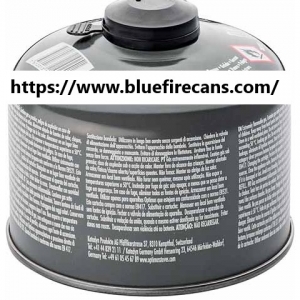A careful eye and a few trusted checks separate a safe purchase from a risky one when buying pressurised fittings. An EN417 Valve is a widely used threaded closure on many disposable fuel cartridges and recognising an authentic piece matters for safety and performance. As online marketplaces and cross border sourcing grow, procurement teams, retailers and end users need clear tactics to spot reliable valves and to avoid counterfeit parts that can jeopardise shipments and customer trust.
Start with the standard itself. The label EN417 refers to a European standard that governs non refillable metallic gas cartridges and the expectations for materials, construction and marking. Knowing that the designation applies to cartridges and valves helps buyers set a baseline for what to expect from a compliant unit and what documentation a reputable supplier should supply on request. When a product claims conformance to the standard, ask for the supplier test or certification paperwork that ties that claim to a verified protocol.
Look for visible markings and traceability. Genuine components and certified cartridges routinely carry manufacturer marks, batch codes or stamped identifiers that are clear and uniform. Poorly executed marks, uneven embossing or missing batch information are common signs of refurbishment or counterfeiting. When a valve or cartridge lacks traceable identification the item becomes harder to verify and more likely to cause problems during customs checks or retailer receiving. Independent certification marks and manufacturer serials are practical anchors in the verification process.
Inspect materials and fit. Counterfeit valves often use cheaper metals or substandard plating that differ in color or weight from genuine parts. The internal lock nuts and key pressure sealing elements in authentic valves are typically made to specific material standards so removing an upper nut to check for brass internals and consistent finishes is a legitimate verification step for technicians. If metals look bleached, rough or inconsistent with known samples, treat the item with caution and consult the seller for more evidence of provenance.
Examine machining and stamping quality. Professional manufacturers use precise stamping and heat treatment for key components and this yields crisp, evenly formed text and consistent shapes. Counterfeits and refurbished components sometimes show blurred fonts, uneven stamping and poor heat treatment marks. Visual and tactile inspection under good light will reveal whether threads are clean and whether mating surfaces seat without play. Small defects in these areas can cause leaks or poor sealing in service.
Demand documentation and test records. A supplier that stands behind its output will provide inline test summaries such as air tightness checks, pressure screening and batch level inspection logs. Those records are useful during procurement because they reduce the need for heavy quarantine inspections on arrival and let warehouses accept stock with confidence. Certification bodies and third party test marks add an extra layer of verification and shorten compliance conversations with carriers and import regulators.
Validate packaging and protective measures. Authentic products are packed to keep valve stems protected during pallet stacking and local transport. Look for consistent carton builds, inner carriers that secure stems and clear packing photos shared by the supplier. Damaged or loose packing increases the risk of dents that may create micro leaks later. When possible compare the supplier's packing images with known samples or request a small sample shipment for hands on assessment before a larger order.
Use vendor reputation and channel checks. Buying through established distributors and verified manufacturer channels greatly reduces counterfeit risk. Brands that list valve specifications, testing steps and production notes on their official pages provide procurement teams with the documentation needed to vet items. If an offered price seems far below market or a seller is unwilling to share production photos and inspection logs, treat the offer as suspect until proven otherwise.
When in doubt run simple functional checks. Before filling or shipping a batch, sample valves can be tested for pressure retention and sealing under controlled conditions. Actuation cycles and seating checks reveal issues that visual inspection might miss. For retailers, a small incoming sample program that includes pressure screening and fit checks avoids putting suspect stock on shelf and reduces potential recalls or safety incidents.
Be aware of supply chain signals that often accompany counterfeit activity. Rapid growth in small online vendors, sudden shifts in lead times or inconsistent carton marks across shipments are red flags. Procurement teams should maintain a short list of trusted suppliers, require batch documentation, and include acceptance criteria in contracts that allow rejection of non conforming lots without ambiguity. Clear purchasing terms are a practical deterrent to sellers of dubious goods.
Finally, build a verification workflow that balances speed and safety. Combine initial visual and fit checks with documentation review and selective sample testing. Keep records so future shipments can be compared and traced. When suppliers provide clear production notes and documented testing, buyers can move from reactive suspicion to routine acceptance and integrate the supplier into regular buying patterns with less friction. If you need a supplier that publishes valve options and production notes, review manufacturer product pages and factory information at https://www.bluefirecans.com/ to match valve families and inspection practices to your procurement and safety needs.








